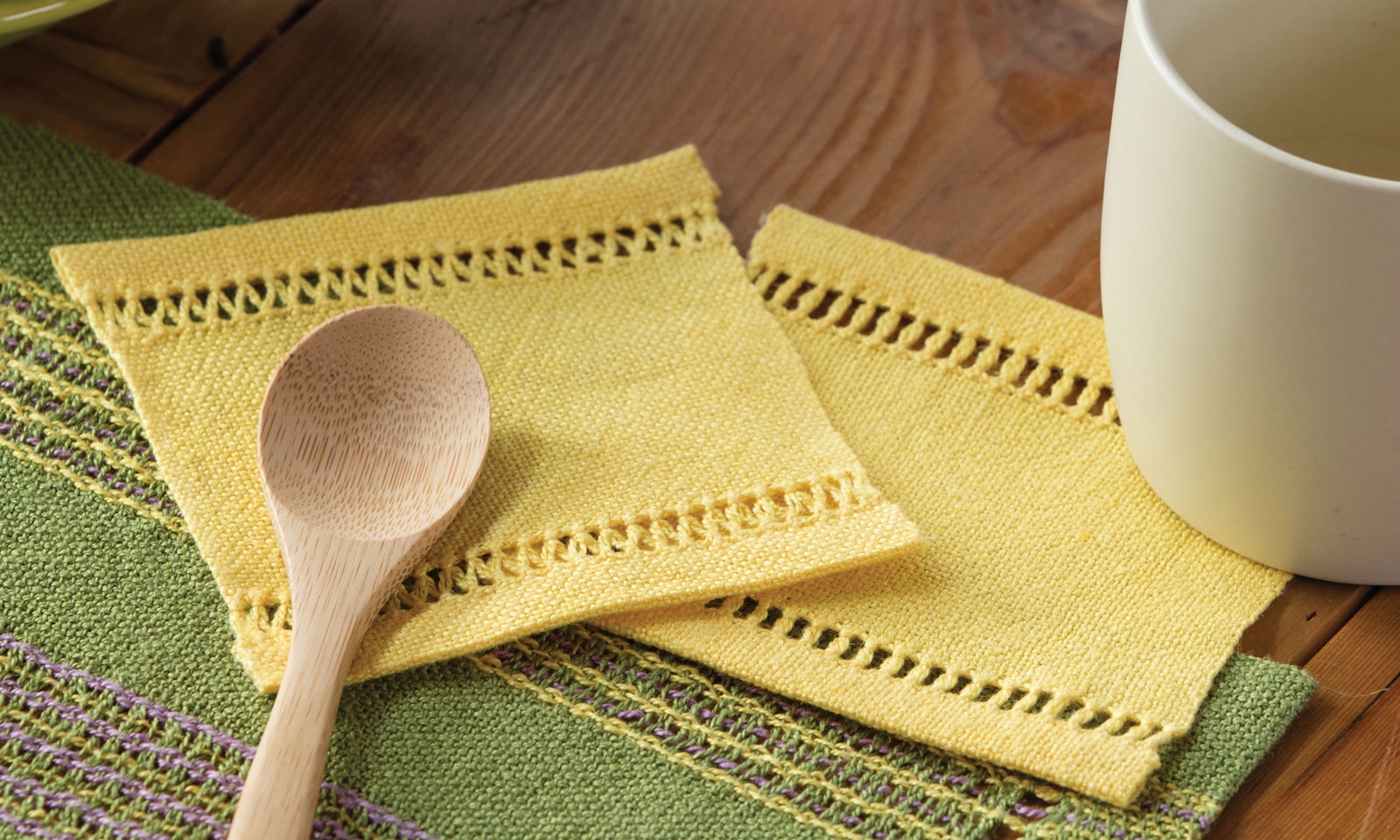Contents
Most weavers have run a line of simple hemstitching at each end of a piece, and followed that up with a fringed finish of one sort or another. The hemstitching virtually disappears from notice while quietly keeping the weft tidy.
But what if you want more from your hemstitching—more presence, more graphic pizzazz? You have options!
In this guide, we’ve gathered our top resources and bonus patterns to help you learn three new methods for fancy, and fun, hemstitching. Every item we’ve selected for this guide is a part of your All Access program and will help you get the most out of your subscription. Let’s dive in!
Introduction: Why Hemstitch?
Adapted from an article by Christina Garton
I’m not sure why I didn’t hemstitch before, but I think it was the same reason warping boards intimidated me: I didn’t know how to do it and assumed it would be hard or that I’d do it wrong and ruin a piece. Now, unless I’m hemming my weaving (and sometimes even then), I always hemstitch.
Your basic, run-of-the-mill hemstitching (like we feature in the back of every issue of Handwoven) is what I use the most often. Typically instructions only have you hemstitch if you’re going to have loose bundles of fringe, but if I’m going to have any sort of fringe on my piece, I hemstitch. The hemstitching not only keeps the weft from raveling while I tie, braid, or twist fringe, but it also makes the hem look so much nicer once my chosen fringe is finished.
If you want to give your fringed hems even more oomph, you can try out Italian hemstitching or square hemstitching. They do the same job as simple hemstitching but add extra decorative touches. Italian hemstitching gives you lacy holes, and square hemstitching gives you squares on one side of the fabric and Xs on the reverse. Or try ladder or trellis hemstitching for a strictly decorative touch.
 Three rows of italian hemstitching on a finished sample. All photos by Deanna Deeds unless otherwise noted
Three rows of italian hemstitching on a finished sample. All photos by Deanna Deeds unless otherwise noted
Hemstitching is one of those wonderful techniques where once you learn how to do it, you’ll find new and wonderful ways to incorporate it into your weaving. Curious about different hemstitching techniques and how to use them? Read on to get instructions for three fancy hemstitching methods, plus patterns and more resources.
Happy Weaving!
Three Types of Hemstitching to Add to Your Repertoire
Adapted from an article by Deanna Deeds
You invest a lot of time, heart, and soul when making a handwoven item, so consider giving it a finish to match: hemstitching by hand. You can quickly do machine-sewn hems or knot the edge, but some pieces need the special touch that shows you took extra care. Beautiful handwovens deserve beautiful finishes!
These three hemstitching methods take you well beyond the basics, to more decorative and exciting finishes for your handwoven projects.
Method 1: Square Hemstitching
Square hemstitching shows squares on the front side (hence its name) and Xs on the reverse.
This technique uses three diagonal stitches, so start with a length of yarn five times the weaving width plus a few inches. As with the simple hemstitch, weave a couple of inches of the fabric before starting.
1.) The first stitch enters a few picks into the fabric and exits at the fell line to the left of the bundle of warp ends.
 Square hemstitching, step 1.
Square hemstitching, step 1.
2.) The second stitch wraps to the right of the warp bundle and exits from the fabric directly above the current exit point.

